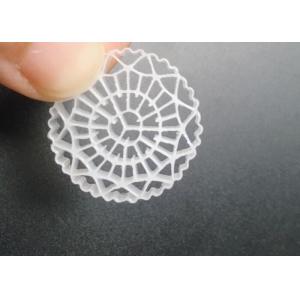Plastic Biological Filter Media Used In MBBR STP
Introduction of biofilm wastewater treatment:
In the MBBR technology, the biofilm grows protected within engineered plastic carriers, which are carefully designed with high internal surface area.
These biofilm carriers are suspended and thoroughly mixed throughout the water phase.
With this technology, it is possible to handle extremely high loading conditions without any problems of clogging, and treat industrial and municipal wastewater within a relatively small footprint.
MBBR technology is efficient, compact and easy to operate. It can be an excellent solution as a stand-alone process, a Moving Bed biofilm reactor, or it can be used to specifically enhance or upgrade treatment potential of activated sludge processes.
Specifications:
| Model | Size(mm) | Specific Surface Area(m2/m3) | Bio-film formation Duration
(days) | Nitrification Efficiency | Preferential Temperature (ºC) | Services life(years) | Number of unites per m3 |
| PE63 | Φ25×5 | >1600 | 5-15 | 400-1200 | <65 | ≥20 | >210,000 |
After adding MBBR bio-filler, do I still need to add bio-mud?
Answer: Depending on the situation, if in the anoxic and anaerobic stages, biological mud is unavoidable and must be added. However, in the aerobic tank, if the temperature is moderate, the nitrification effect is good, and it can be omitted. If the number of bacteria is insufficient, an appropriate amount of bio-mud can be added to promote the film-hanging rate.


